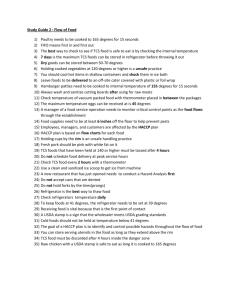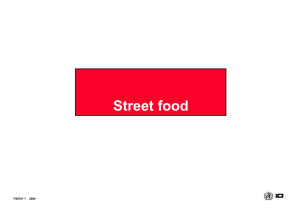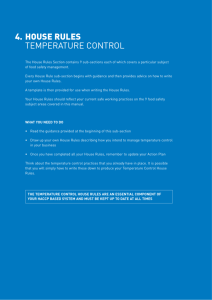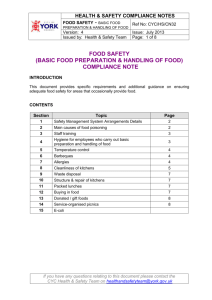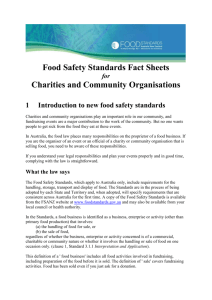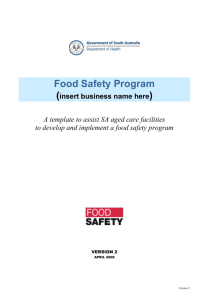Hazard Analysis Critical Control Points
advertisement
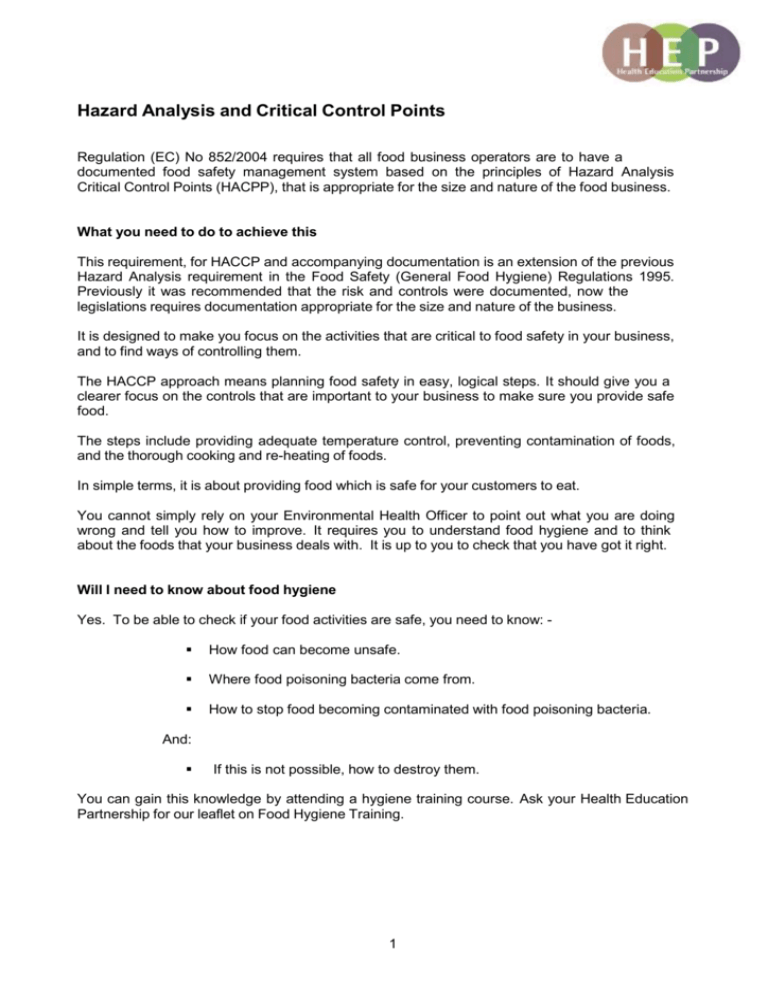
Hazard Analysis and Critical Control Points Regulation (EC) No 852/2004 requires that all food business operators are to have a documented food safety management system based on the principles of Hazard Analysis Critical Control Points (HACPP), that is appropriate for the size and nature of the food business. What you need to do to achieve this This requirement, for HACCP and accompanying documentation is an extension of the previous Hazard Analysis requirement in the Food Safety (General Food Hygiene) Regulations 1995. Previously it was recommended that the risk and controls were documented, now the legislations requires documentation appropriate for the size and nature of the business. It is designed to make you focus on the activities that are critical to food safety in your business, and to find ways of controlling them. The HACCP approach means planning food safety in easy, logical steps. It should give you a clearer focus on the controls that are important to your business to make sure you provide safe food. The steps include providing adequate temperature control, preventing contamination of foods, and the thorough cooking and re-heating of foods. In simple terms, it is about providing food which is safe for your customers to eat. You cannot simply rely on your Environmental Health Officer to point out what you are doing wrong and tell you how to improve. It requires you to understand food hygiene and to think about the foods that your business deals with. It is up to you to check that you have got it right. Will I need to know about food hygiene Yes. To be able to check if your food activities are safe, you need to know: How food can become unsafe. Where food poisoning bacteria come from. How to stop food becoming contaminated with food poisoning bacteria. And: If this is not possible, how to destroy them. You can gain this knowledge by attending a hygiene training course. Ask your Health Education Partnership for our leaflet on Food Hygiene Training. 1 At which points do food hazards occur in my business? Food passes through many steps: delivery, storage, preparation, portioning, cooking and cooling. Hazards can occur at any or all of these steps. For each type of food, you should identify the hazards that can occur at each step. Think about the types of foods you sell. You could group them into different categories depending on the nature of your business. Retail examples are: High risk, open food or foods prepared on site, such as cooked meats, sandwiches and cream cakes. Medium risk foods, such as packaged cooked meat, cheeses and nondairy cream cakes. Low risk foods or fully preserved foods, such as bread, tinned products and jam. Catering examples are: High risk food such as cooked meat and meat dishes, gravy, stock, stews; egg and dairy products; fish and shellfish. Medium and low risk food; such as microwave re-heating of ready cooked meals, frozen food or vegetables. Busy kitchens typically produce a large number of different dishes in small batches. It may be very time consuming to apply the HACCP principles individually to every dish. Group together foods that are prepared in the same way as they will normally have the same potential hazards and the same controls. However, be careful not to miss hazards and control points. For example; foods that are to be pre-cooked, stored and reheated will have a number of critical control points that are not an issue if the dish is to be cooked and served immediately. What steps does food go through in your business? Drawing up ‘flow diagrams’ can help you with this. Write down all the processing stages that each food or group of foods will go through in your kitchen. Start with receiving your deliveries from your food supplier, and go right through to serving the food to your customer Set control targets for every critical control point that you identify. Variations from that level which are considered acceptable before corrective action is taken, are the critical limits. For example, in the instruction: Reheat precooked dishes to 75oC or hotter. The target value is 75oC and the critical limit for re-heating is 75oC or above. Cook raw foods so that the core temperature reaches at least 70oC for 2 minutes. Use a critical limit core cooking temperature of +75oC (for 30 seconds) to ensure the safe cooking temperature has been exceeded. 3 Decide how to monitor the critical controls and set up monitoring procedures You must monitor your critical limits. How often you monitor them will depend upon the nature of the control, practicality and the level of confidence the monitoring procedure gives. Ways of monitoring The methods you use should be kept as simple as possible. For example: On delivery, check the packaging, and ‘best before’ or ‘use by’ dates. Check that all your equipment is cleaned before you use it. Measure the temperature. Points to remember when you set up your monitoring procedures Consider developing ‘working instructions’ for the controls and monitoring procedures for staff to refer to, particularly where you have identified a critical control point. They should include: What is to been done? How it is to be done? When it is to be done? Where it is to be done? Who is to do it. Further advice can also be found on the Food Standards Agency website www.foodstandards.gov.uk. 3

